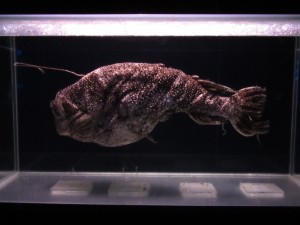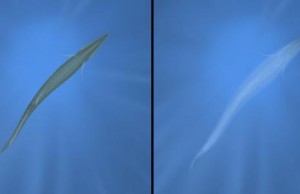Background on the first 2 layers of the ocean
The epipelagic zone refers to the first layer of the ocean (0 – 200m). It is also known as sunlit zone, or the euphotic zone, or sunlight zone – where most of the light is still visible. Many creatures were not discovered at first and this midwater region remained mysterious as submersibles preferred to save energy for exploring the deeper regions by turning off the lights. Later in the 1980s, dives in this zone up till the next zone stumbled upon the wide variety of organisms that were waiting to be discovered.

However, the sunlit zone only accounts for up till 200m. Mesopelagic zone accounts for the bulk of 150m to 600m. Categorised as 200m to 600m deep, it is considered the second layer of the ocean. It was also observed that at 150m below the surface, 99% of the light has already been absorbed by the seawater. Hence, overall this section was named ‘Twilight of the Ocean’, where only faint and filtered sunlight is received during daytime near the end of the epipelagic zone (0-200m),
Light and survival
For human beings, light has been an integral part of our lives and is essential in survival; so much that invention of artificial light was crucial as sunlight only lasts in the daytime. However, light in the deep sea brings about more vulnerability instead.
In these first 2 layers of the ocean where light is the most abundant, so are the food sources. However, as sunlight dims deeper into the sea, the faint light turns the zone into a shadow theatre, where even the smallest of silhouettes will stand out distinctly against the brighter background.

In order to survive, the exhibition highlights ways the animals have adapted.

To avoid detection by predators, some deep sea animals have transparent bodies.
Other animals create its own light to counterbalance the opacity of tissues (known as Bioluminescence), or have a silvery reflective coating (known as Counterillumination). Sometimes there may be a combination of both.

Unlike how animals with transparent bodies try to avoid detection, bioluminescent animals like this angler fish adapt in a different way. This angler fish uses its fishing rod-like hanging from his head to lure in his prey.

However, this species is unique in its capacity to reel in the prey right up to his mouth by retracting its rod in a pouch, which is very similar to that of a fly-fisherman.
Other bioluminescent animals commonly use this property for communication, such as attracting a mate.

Counterillumination refers to how light produced by the animals can help them camouflage from predators.
This fish shows how counterillumination helps the fish to blend in with the dimly lit waters, where light is coming from above.
Overall, the section can be said to be the most abundant in marine life, in terms of wildlife diversity and food sources. Different ways of adaptation can be observed in the marine animals living in this twilight zone as well.
Next up, Appearance of colours in the deep.